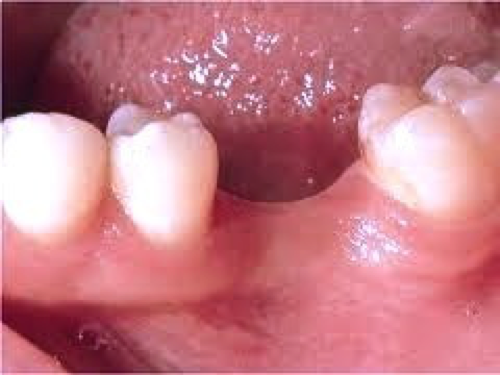
How to ‘Prime’ your Patient Communication for Better Results

By Daniel Midson-Short
When you see a patient who has a missing tooth like the one pictured here, chances are you have some concerns. Û¬Û¬You know the damaging results of missing teeth, you know the long term consequences.
In stark contrast, your patient probably doesn’t care much at all. The tooth was likely removed some time ago, and there is no current pain. Û¬Û¬
So what do you do to Û÷helpÛª the patient to see the reality of a missing tooth?
The typical dentist approach is to recommend a bridge or an implant. However, whenever a patient hears a recommendation, it causes them to say things like:
- “How much is that going to cost me?”
- “Why do I need it?Û
- “My other dentist didn’t say that!ÛÛ¬Û¬
When a dentist hears these objections, it’s natural to try and handle them by explaining the reasons for the treatment plan. Typically, this is when the dentist will begin to Û÷educate to convince.Ûª The problem with this approach is that it’s entirely reactive. By doing so, we’ve actually inadvertently caused a problem by recommending and then we are forced to try and rectify it.
In the Primespeak approach, we look closely at the structure of a new patient exam. To do this, we separate it into three distinct sections:
- Û¬Û¬Pre-Clinical Discussion – before we lay the patient backÛ¬
- Clinical Exam – when we are charting conditions
- Consultation – the discussion we have before the patient leavesÛ¬
In our experience, dentists tend to hear most objections to their treatment suggestions during the consultation phase. The reason for this is because the patient doesnÛªt actually understand the problem and hence doesnÛªt really want a solution.Û¬
Anytime a dentist makes a recommendation before the patient has absorbed the full nature of the problem, it is going to cause reactive behavior. Û¬Û¬In other words, when there is a solution before the problem is understood, there will be resistance.
That is why in the Primespeak approach we sow seeds of dental education information during the pre-clinical discussion, and discover these conditions during the clinical exam phase. Taking this approach means we are ‘priming’ the patient with information that relates to a problem, not a solution. This what creates the Û÷primeÛª in ÛªPrimespeakÛª.
This process has to be done carefully and with empathy.Û¬ If it’s done crudely, it can make a patient feel as if ‘this dentist is just trying to scare meÛª. Creating panic is not the intention. Û¬Û¬There are an infinite number of ways to communicate poorly. There are only a few ways of communicating perfectly.
The aim of Primespeak is to develop superb communications skills that never get misinterpreted as a sales-pitch and never scare the patient.Û¬Û¬ When done correctly, the result is a patient developing a clear understanding of his or her dental condition as the first step. It’s all about sequencing information correctly.









Leave a Reply
Want to join the discussion?Feel free to contribute!